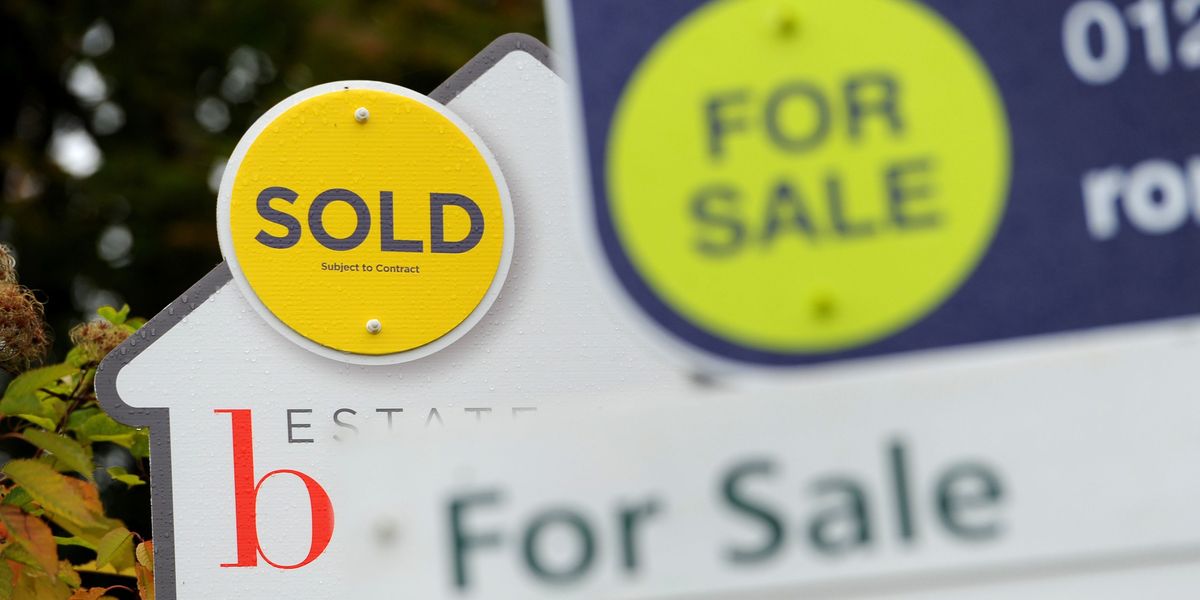UK house prices finished 2024 with remarkable strength, recording a 4.7 per cent increase compared to December 2023, according to Nationwide’s latest figures.
The final month of the year saw a 0.7 per cent monthly rise, following a robust 1.2 per cent increase in November. Some regions saw prices increase as much as 7.1 per cent in the final quarter of the year.
This strong performance brought property values close to their peak, with prices ending the year just shy of the all-time high recorded in summer 2022. The housing market demonstrated unexpected resilience throughout 2024, with mortgage approvals rising above pre-pandemic levels towards the year’s end.
Nationwide’s chief economist Robert Gardner commented: “At the start of [last] year, house prices remained high relative to average earnings, which meant that the deposit hurdle remained high for prospective first-time buyers.
“Moreover, for many of those with sufficient savings for a deposit, meeting monthly payments was a stretch because borrowing costs remained well above those prevailing in the aftermath of the pandemic.
“For example, a typical mortgage rate for someone with a 25 per cent deposit hovered around 4.5 per cent for much of the year, three times the 1.5 per cent prevailing in late 2021, before the Bank of England started to raise the Bank Rate.
“As a result, it was encouraging that activity levels in the housing market increased over the course of 2024 with the number of mortgages approved for house purchase each month rising above pre-pandemic levels towards the end of the year.”
Some regions were better off than others in 2024. A clear north-south divide emerged in house price performance across the UK, with northern regions showing stronger growth. Northern Ireland led the way for the second consecutive year, achieving a remarkable 7.1 per cent increase in house prices.
The North of England demonstrated robust performance, with prices rising by 5.9 per cent, making it the strongest-performing English region.
Overall, Northern England, including the North, North West, Yorkshire & The Humber, East Midlands and West Midlands, saw prices climb by 4.9 per cent year on year.
Scotland maintained steady growth at 4.4 per cent, while Wales recorded a 2.7 per cent increase.
Regional House Price Changes (Q4 2024)
• Northern Ireland: £197,696 – up 7.1%
• North: £164,696 – up 5.9%
• North West: £218,012 – up 5.5%
• West Midlands: £245,173 – up 4.7%
• East Midlands: £235,877 – up 4.4%
• Yorkshire & The Humber: £207,373 – up 4.4%
• Scotland: £187,016 – up 4.4%
• South West: £306,730 – up 2.7%
• Wales: £207,187 – up 2.7%
• Outer Metropolitan: £422,372 – up 2.4%
• Outer South East: £336,224 – up 2.3%
• London: £525,535 – up 2.0%
• East Anglia: £272,152 – up 0.5%
The UK average house price stood at £268,518, representing an overall increase of 3.6 per cent for the quarter.
Looking ahead to 2025, the housing market is expected to face some initial volatility due to upcoming stamp duty changes.
LATEST DEVELOPMENTS
Stamp duty will rise this year
GETTY
The property pro predicted a surge in transactions during the first quarter, particularly in March, as buyers rush to complete purchases before new tax rules take effect. This is likely to be followed by a period of weakness lasting three to six months, mirroring patterns seen after previous stamp duty changes.
He said: “Upcoming changes to stamp duty are likely to generate volatility, as buyers bring forward their purchases to avoid the additional tax.
“This will lead to a jump in transactions in the first three months of 2025 (especially in March) and a corresponding period of weakness in the following three to six months, as occurred in the wake of previous stamp duty changes. This will make it more difficult to discern the underlying strength of the market.”

